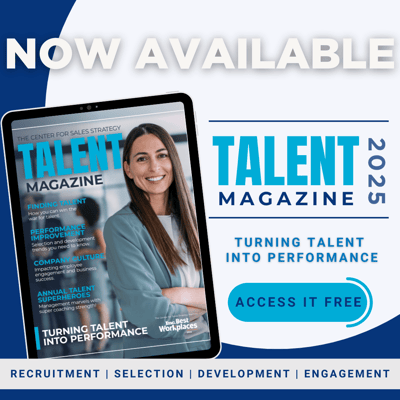
If you have ever been part of hiring and training a new employee, you know how important it is to get it right. The company can only be as good as its employees, so each hire has the potential to raise the performance bar for the entire organization.
So, how does a company ensure that they get that right? We believe it’s a combination of both art and science.
 The Science
The Science
Every job role requires a very different set of talents.
Imagine two different people who are both stellar in their jobs. One is a Kindergarten Teacher and the other is a Tax Attorney and they're both the very best in their fields. If you were to make a list of what makes each one so naturally good at what they do, your lists would probably look very different!
We're all hard-wired from a very young age with a unique set of strengths and weaknesses. While we can improve in an area of weakness by as much as 10%, we can improve in an area of strength by 10X! Career success starts with finding a job that demands frequent use of our innate strengths and rarely requires us to lean on our weaknesses.
Would the Kindergarten Teacher be equally stellar in the Tax Attorney role? How about the other way around? Maybe… but probably not.
The best hiring decisions are powered by science and involve a validated talent assessment built for the specific job role. With this kind of instrument, you go in with your eyes wide open.
A strong talent instrument measures the behaviors that lead to excellence in a specific role and provides you with the level of intensity your candidate has in each area. Understanding an individual’s talent is key to success in making smart selection decisions.
But science isn’t everything.
The Art
No one understands a business like those who work in it.
As a hiring manager, you know the culture of the company and the vibe in your office. You're clear on the personalities that work well there, the style with which you prefer to work, and the expectations you will have for your new hire. In other words, you know whether someone will be the right fit for what you need in the job.
That’s the art.
The Art and Science Combined
We recently asked a group of business leaders how they would respond if one of their managers told them that their hiring decisions were based entirely on gut instincts.
One explained, “Instincts are a valuable asset in leading and recruiting and shouldn’t be ignored. However, making hiring decisions based solely on guy instinct and ignoring an individual’s strengths and talents, as it relates to the role, is as wrong for the individual as it is for your organization.”
That was very well said.
While you have to hire people who will fit well with your company, your clients, your products/services, and the other employees, first and foremost, they have to be innately wired to have success in the job.
Without those talents, even the hardest working person receiving the best training and coaching will only get a 10% lift. That’s a disservice to both company and the individual.
How to Get it Right
Here are three tips that can help you apply both the Art and the Science of hiring to get it right:
1. Prepare Great Questions
For example, if you need to hire someone who can prospect for new business and be a natural closer, ask questions to uncover the behaviors that would make them successful in the position like:
How much do you like convincing people to do what you want them to do?
Someone who answers, “a lot!” may have more of a natural ability to persuade people than someone who answers “I don’t know if I talk people into things but I share my opinions and people listen.”
2. Schedule Multiple Interviews
Schedule face-to-face or video interviews to get to know your candidates better. If you're able to meet in person, consider leaving the office building for lunch or coffee so you can see how they interact with and treat others.
3. Include Both Leaders and Non-leaders
Both parties should be included in those conversations. You will gain tremendous insight by involving people who currently do the job for which you are hiring. For those who have never done the job before themselves, make sure to share exactly what characteristics you are looking for.
4. Use a Validated, Role-Specific Talent Assessment
This ensures you understand the candidates’ natural strengths as well as the weaknesses that could get in their way.
Consider how you can combine your experience and gut instincts with a talent instrument that will provide you with the additional insight that you need. As another leader in the group explained, “Strong talent is the difference-maker in sales teams that succeed year after year. Choose to hire right and coach them well, and your business will thrive."


